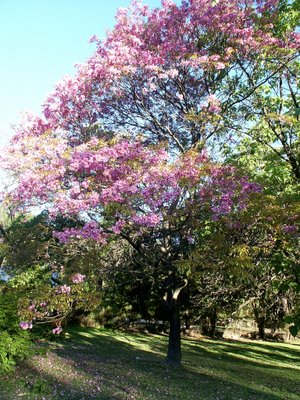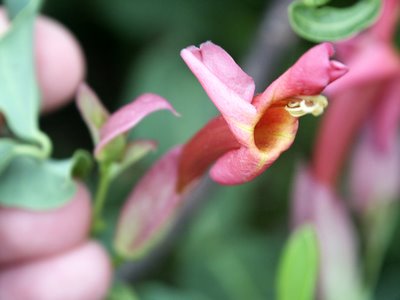Dolichandra unguis-cati has a semipersistent foliage in the Bignoniaceae family. The stems are woody and can reach 20 meters. Thin and small aerial roots are used for climbing. The name "Cat's Claw" derives from this clawed tendril which the plant uses to climb. The leaves are dark green, opposite and bifoliate. The leaflets have a length of 3-4 cm. The plant produces flowers during the wet season. The flowers are yellow, have a diameter of 4-5 cm and can grow alone or in groups of 2 or 3. The long primary roots extend beneath the soil surface, producing large tubers; 40-50 cm long. The fruits are brown flattened capsules, 25-95 cm long, produced from January to February. Each capsule contains 100 to 200 seeds. This species is native to semi-tropical and tropical South America, the Caribbean and the tropical dry forests of Central America. In these natural areas it occurs from sea level to over 600 m above sea level and where the rainfall is 750 to 2400 mm per year.
Dolichandra unguis-cati posee un follaje semipersistente de la familia Bignoniaceae. Los tallos son maderosos y pueden alcanzar los 20 metros de longitud. Delgadas y pequeñas raíces aéreas son utilizadas por esta planta para trepar. Las hojas son de un tono verde oscuro, opuestas y bifoliadas. Los folíolos cuentan con una longitud de 3-4 cm. La planta produce flores durante la estación húmeda. Éstas son amarillas, con un diámetro de 4-5 cm y pueden crecer en forma solitaria o en grupos de 2 o 3. Las prolongadas raíces se extienden debajo del suelo, produciendo túberos largos de 40-50 cm de largo. Los frutos son cápsulas marrones aplanadas, de 25-95 cm de largo y aparecen de Enero a Febrero. Cada uno de ellos contiene de 100 a 200 semillas. Esta especie es nativa de la América del Sur subtropical y tropical, el Caribe y los bosques tropicales secos de la América Central. En estas áreas naturales crece desde el nivel del mar hasta encima de los 600 m de altura; donde la precipitación anual sea de 750 to 2400 mm.













